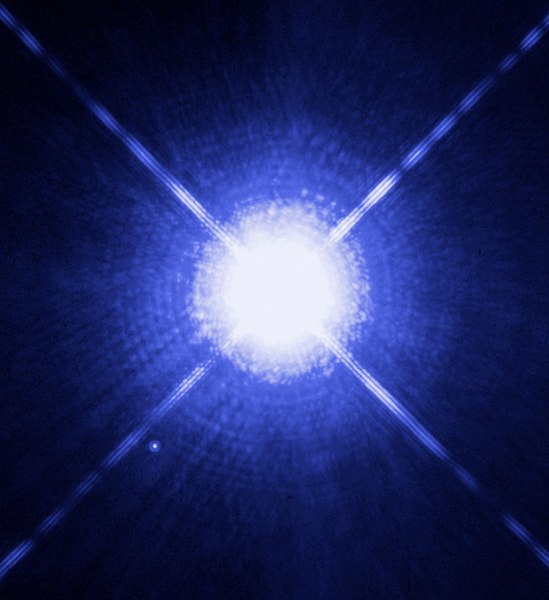 حجم هذا العرض: 549 × 600 بكسلالصورة بدقة كاملة
حجم هذا العرض: 549 × 600 بكسلالصورة بدقة كاملة (1,280 × 1,398 بكسل، حجم الملف: 160 كيلوبايت، نوع الملف: image/jpeg)
| Description |
This Hubble Space Telescope image shows Sirius A, the brightest star in our nighttime sky, along with its faint, tiny stellar companion, Sirius B. Astronomers overexposed the image of Sirius A [at centre] so that the dim Sirius B [tiny dot at lower left] could be seen. The cross-shaped diffraction spikes and concentric rings around Sirius A, and the small ring around Sirius B, are artifacts produced within the telescope's imaging system. The two stars revolve around each other every 50 years. Sirius A, only 8.6 light-years from Earth, is the fifth closest star system known.
|
| Source |
http://www.spacetelescope.org/images/html/heic0516a.html
|
| Date |
15 Oct., 2003
|
| Author |
NASA, ESA
Credit: H. Bond (STScI) and M. Barstow (University of Leicester)
|
Permission
(Reusing this image) |
see below
|
 |
This file is in the public domain because it was created by NASA and the European Space Agency. Hubble material is copyright-free and may be freely used as in the public domain without fee, on the condition that NASA and ESA is credited as the source of the material. The material was created for NASA by STScI under Contract NAS5-26555 and for ESA by the Hubble European Space Agency Information Centre. [1] or [2]. |
|
وصلات
الصفحات التالية تحتوي على وصلة لهذه الصورة:

